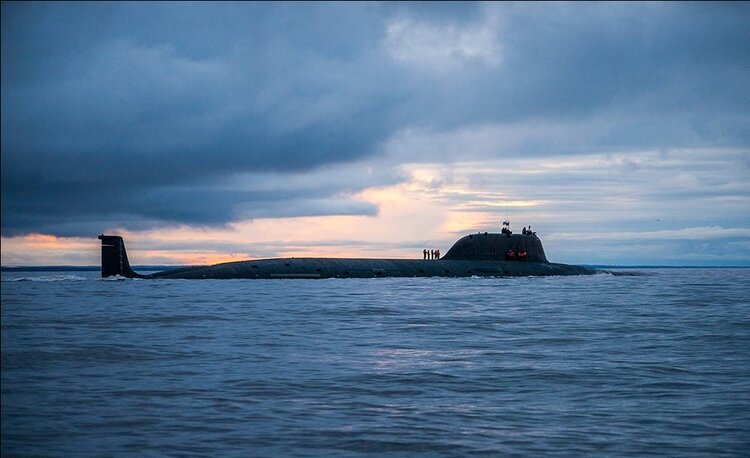Bryan Clark, Dan Patt, and Timothy A. Walton

Tough choices lie ahead for the U.S. Department of Defense. Government relief in response to the COVID-19 pandemic and rising costs to service the federal debt are expected to constrain discretionary spending, including spending on defense. At the same time its budgets are being squeezed, the U.S. military will need to address a peer competitor in China; creative Russian, Iranian, North Korean adversaries; and a potentially unaffordable approach to deterring and waging war.
Tough choices are often unpopular. Consider the opposition to Commandant of the Marine Corps General David Berger’s efforts to restructure his service to fight inside enemy weapons range from places like the islands around China’s coast. The argument made by Berger and other defense leaders is that the U.S. military cannot continue to rely on the forces and concepts that won in Iraq and Afghanistan to deter or defeat sophisticated adversaries like China. The U.S. military is already pursuing new warfighting approaches to overcome the People’s Liberation Army’s robust sensor and weapons networks and growing air and naval forces. In a tight fiscal environment, equipping U.S. forces for these new concepts may require the divestment of some traditional capabilities.
Defense officials and analysts have advanced a wide range of solutions to the U.S. military’s operational and budgetary challenges. Most proposals strike familiar notes: invest in emerging technologies such as artificial intelligence, hypersonics, and unmanned systems; do more experimentation; recruit and manage the force more effectively. These are arguably the table stakes in a great-power competition. To gain and sustain an advantage, the Department of Defense must do more than just get better; it will need to build on U.S. strengths in ways that exploit adversary vulnerabilities and undermine enemy confidence.
To reveal these opportunities, the Department of Defense and U.S. government should return to a tool largely neglected since the end of the Cold War: net assessment, one of the most discussed and least practiced analytic techniques in national security strategy. As an overall comparison of two or more competitors, net assessment can help reveal their strengths, weaknesses, and the asymmetries between them.
The art of net assessment helped the United States win the Cold War when insightful analysts including Andrew Marshall and Eliot Cohen used it to identify points of leverage for U.S. strategy. In the Cold War’s aftermath, Andrew Krepinevich’s outstanding net assessments revealed the emerging Revolution in Military Affairs and its precision-guided weapons regime. But in the years since, net assessment has largely fallen into disuse as a tool to publicly guide defense planning.
As an approach that looks for potential opportunities by holistically exploring a competition, net assessment would seem well-suited to the combination of capable adversaries and looming budget constraints facing the United States. Yet, outside a few external and internal Department of Defense studies, net assessments are not helping shape the debate about how to affordably advance U.S. and allied security interests. The most important of these interests, as described by defense leaders, is deterring aggression by China and the PLA.

There are likely several reasons net assessments of the U.S.-China competition have not emerged. Although widely described in works such as Dr. Thomas Mahnken’s excellent edited volume, Net Assessment and Military Strategy: Retrospective and Prospective Essays, net assessments lack a fixed structure, requiring analysts to formulate their own methodology using the basic building blocks of comparing competitors’ strategy and doctrine, capability trends, and underlying economic and geopolitical conditions. Net assessments are also more qualitative than analysis based on modeling and simulation or statistics, though they do include quantitative data; variables like strategy, will, geography, or alliances are hard to put into numbers. Lastly, net assessments are not fast, as years of sustained intellectual effort may be needed to understand a competitor's point of view and decision-making processes.
Perhaps the most significant challenge facing net assessments is the idiosyncratic nature of their results and recommendations. Analysts must use creativity and intuition to sort through information describing each competitor and identify asymmetries that reveal strengths, sources of national or military power, and potential vulnerabilities. The findings could be at odds with predominant thinking regarding technology investment priorities, the U.S. theory of victory, or the foundational processes that underpin how the Department of Defense spends money. And the resulting recommendations will likely require choices that gore some sacred cows.
CREATIVITY IS WHAT WE NEED
Winston Churchill and physicist Ernest Rutherford both reportedly noted that the time to start thinking is when money runs out. The Department of Defense is likely at the end of funding increases it enjoyed since 2001. Moreover, despite its nearly $700 billion annual budgets, the U.S. military is facing lean financial times because of the rising operations and support costs associated with its current force structure.
The Department of Defense will need to evolve toward a more affordable force design through measures such as shedding capacity, embracing new technologies, or rebalancing toward smaller or less-expensive units. Effectively competing against China with a sustainable military may require creative strategies that leverage American strengths such as alliances, financial systems, and operational adaptation to overcome inexorable shortfalls like being the away team in most potential confrontations. Net assessments can help reveal opportunities for strategies of this kind and—most importantly—establish priorities for limited federal budget dollars.
For example, Cold War net assessments suggested the Soviet economy was in much worse shape than the American economy, despite rising U.S. inflation during the 1970s and growing deficits during the 1980s. The Soviet government also had a much greater fear of attacks across its vast borders, whereas U.S. leaders took solace in being distant from potential threats. Together, these asymmetries suggested an approach to drive up Soviet defense spending and erode its economic position by deploying cruise missiles on U.S. ships and aircraft to compel increased Soviet investment in missile defense. Overall, this strategy was relatively inexpensive compared to the costs imposed on the Soviets.
Net assessment could yield similar benefits in the competition with China—but would have to address a host of new factors. The world is more complex than during the Cold War, when the U.S. and Soviet economies and information environments were largely separate. Today, China participates in a common global market and is strongly coupled to the U.S. economy. Information networks are also much more widespread and interconnected today, although significant firewalls exist around China’s domestic Internet and most military communication systems.
Some factors a net assessment would consider are similar to Cold War analyses. Like the Soviet Union, China is currently the “home team” in military confrontations, which gives it advantages in areas like sustainment, sensing, and initiative, but also may lead to a reliance on relatively static system architectures and command and control processes. And as in the Cold War, asymmetries between U.S. and Chinese alliance structures may offer opportunities for U.S. strategy.
View fullsize

The Russian Yasen-class nuclear-powered attack sub Severodvinsk. (Wikimedia)
The net assessment approach is not only applicable to the overall U.S.-China strategic competition, but also to the sub-competitions that occupy the time of most Pentagon decision-makers. Hard problems like anti-submarine warfare, electromagnetic warfare, and air and missile defense are expensive missions ripe for disruption by new technologies and operational concepts. Net assessments could reveal these opportunities and help spend defense funding on capabilities with the most leverage instead of engaging in system-versus system-duels with deep-pocketed opponents like China.
The U.S. national security establishment needs to reacquaint itself with the art and science of net assessment. Without the creativity and prioritization it enables, the U.S. position in great power competitions will erode despite historically high federal spending. We have to start thinking.
No comments:
Post a Comment